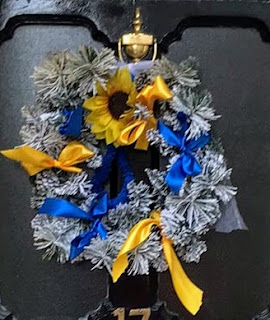3000 km bike ride for villages in India
My bike ride for Village India
An update on my progress so far.
When the
ravaging second wave of Corona Virus hit India’s metropolitan cities the TV cameras
showed us people waiting in the streets outside government and private hospitals,
in private cars, in ambulances, and on trollies. All waiting for someone to die so that a bed
would be available for themselves, a sick mother or father. We saw queues of
people with empty oxygen cylinders waiting to get them filled. These were
people who could afford to pay, or took loans from relatives. People who had
cars or could hire private ambulances. Hospitals ran out of oxygen. Desperate people
resorted to stealing cylinders and hijacking oxygen lorries. Trains brought oxygen
tanker lorries to Delhi and Mumbai from industrial works thousands of miles
away.
As the
infection rates dipped the cameras went away, instead of turning their
attention to the fate of the vast rural hinterland with a fragile and ill-
equipped rural health structure. Villages to which those who had attended the
PM’s election rallies and the twelve million pilgrims from the religious
festival in Haridwar, had returned. They brought the virus with them from
unmasked, congested ‘super-spreader events’ to their home villages and small
towns.
Having worked in rural India for almost 20 years, my first thoughts were for the Indians who cannot afford hospital beds, doctors’ fees, medicines and oxygen. I was inspired to try and do something for them. I had lived among, and worked with, villagers in the poorest states of India, Bihar, Uttar Pradesh and Odisha; states where 90% of the population live in rural villages.
The Indian
government decided to make the vaccination programme digital, thereby cutting
off the opportunity for millions of village people to get vaccinated. The government requires people to register for
vaccination on a smart phone. Rural poor people do not have smart phones! True
some better off young men have sacrificed and scrimped and saved to buy the
Chinese and east Asian versions for chat and music but they are not familiar
with filling in forms online, as the majority are illiterate.
The poor, tribal
and lower caste people do not have smartphones. Rajni, his family, driver and
staff use their phones to register 4 villagers at a time, internet permitting,
in an area where power cuts regularly come and go. For the poorest we are providing the auto
rickshaw fare to encourage them to go 12 miles to the nearest Public Health Centre.
These trips take about 3 hours, including travel, queues, faulty computer
connections and the availability of the vaccine. These village people exist by
providing daily labour in the fields and houses of richer villagers. They lose
a day’s wages by going for the vaccine. Luckily with intensive education, and with
the support they received from your donations, from Rajni and his team when
they were ill, the Dharauli villagers are now willing to make this sacrifice
and go for vaccination, unlike their town
My fifth
week of cycling had a setback in that my bike had to go for a service which
lost me three days of cycling. I used the time to catch up on housework, office
work and a did a bit of pottering in the garden. My mileage this week was concentrated
into 3 days and hence only 111 miles. My total for the five weeks is 668 miles,
which sounds much better as 1028 kilometres. Either way I am over a quarter of
my 2000mile target.
I follow an
ordnance survey map and explore different routes around Suffolk’s villages. Following
signposts, when not obliterated by overhanging greenery, to remote hamlets
along badly surfaced roads as well as visiting larger villages with timbered
manor houses, thatched cottages and a church.
Grey flint-stone decorated churches from the days when East Anglia was a
prosperous sheep farming area. Churches with steeples, round towers,
castellated towers and stumpy towers. There is not time to visit them but I
have been to many on the fundraising cycling days for ‘Churches of Suffolk’. As
the countryside has become depopulated and vicars are in short supply many of
the churches take Sunday services in rotation, while bats, birds and rodents
take up residence!
The trees
have greened up this week and I am grateful for their shade. The verges of buttercups and cowslips, Queen
Anne lace and ragwort have been replaced with ox-eye daisies and poppies, with
dog roses climbing through hedges and stinging nettles reaching out to unwary
passing legs.
An abundance
of roses, having replaced the wisteria of last month, cling to cottage walls.
Ducks are evident on village ponds. Working farms along dusty lanes and workers houses where arable farming predominates, border fields of yellow rape,
potatoes, sugar beet, wheat and barley. Larger villages have a village hall
promising events ‘Boris permitting’ but villages shops have disappeared except
where they straddle a main road with a garage-cum-convenience store.
This week I
have been exploring the east of Bury St Edmunds which is, on the whole, less
hilly than the area of the Barrow heights and the Moulton hills on the
Newmarket side. I am glad for a long downward hill to rest my legs which have
to go round and round for three or more hours a day. However, the topography is
very undulating, and I have usually have to peddle like mad on the downhill to
hope to get up the inevitable uphill that follows it. All for a good cause though!




Comments
Post a Comment